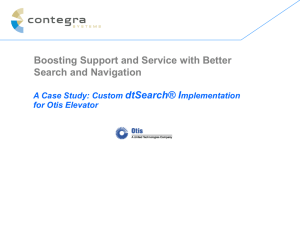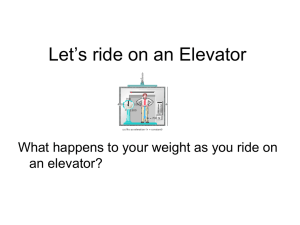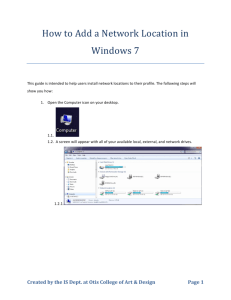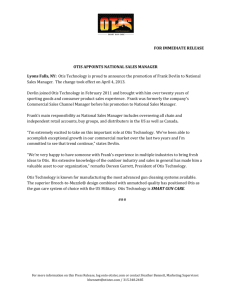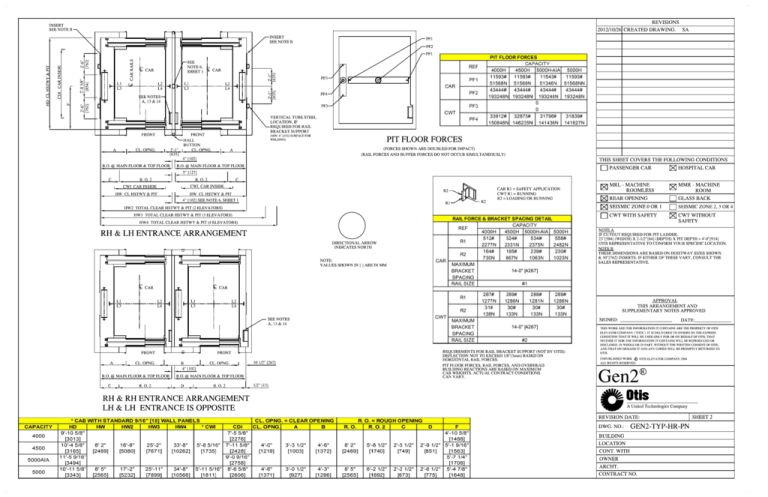
TOTAL OVERHEAD
UPDATED AA AND TO IN OH/PIT TABLE.
2014/04/25 UPDATED ROLLER GUIDE (AA) FROM
6" [76] TO 3" [152]. NB
TO
AA DISTANCE FROM TOP LNDG. TO MMS SUPPORT
1'-7" MIN.
[483]
TOP
FLOOR
12'-0 [3658] HOISTWAY LIGHT
HOISTWAY LIGHT
SEE NOTE 23, SHEET 1
R. O. = CLEAR OPNG. + 10" [254]
FRONT
FLOOR
MARKING
VENTILATION
(SEE NOTE G)
7'-0" [2134] CLEAR OPNG.
SEE NOTE D
REAR
FLOOR
MARKING
REVISIONS
2012/10/26 CREATED DRAWING. SA
CAB HEIGHT
FLOOR TO
FLOOR
HEIGHT
BL TOP LNDG. TO UPPER MOST RAIL SUPPORT
SEE DETAILS 3 & 4
SHEET 4
THIS SHEET COVERS THE FOLLOWING CONDITIONS
LIGHT SWITCH
SEE NOTE C
*
CWT WITH SAFETY IS NOT AVAILABLE FOR THIS CAR SPEED.
IF CAPACITY = 2500# AND COUNTERWEIGHT WITH SAFETY THEN "BL" MUST BE REDUCED BY 18" [457MM].
IF ROLLER GUIDE SIZE (ROLGDSZ) = 200mm
CAR SPEED = 400 THEN 3" [76] ADDITIONAL PIT REQUIRED AND 3" [76] (AA) AND TOTAL OVERHEAD (TO) REQUIRED.
CAR SPEED = 450 THEN 2" [51] ADDITIONAL PIT REQUIRED AND 3" [76] (AA) AND TOTAL OVERHEAD (TO) REQUIRED.
CAR SPEED = 500 THEN 3" [76] (AA) AND TOTAL OVERHEAD (TO) REQUIRED.
AVAILABLE DUTY/SPEED ARRANGEMENTS ARE:
4000 DUTY LOAD - ALL SPEEDS
4500 DUTY LOAD - ALL EXCEPT 500 FPM
5000 DUTY LOAD - ALL EXCEPT 450 OR 500 FPM
"DETAIL A"
PASSENGER CAR
HOSPITAL CAR
MRL - MACHINE
ROOMLESS
REAR OPENING
MMR - MACHINE
ROOM
GLASS BACK
SEISMIC ZONE 0 OR 1
SEISMIC ZONE 2, 3 OR 4
CWT WITH SAFETY
CWT WITHOUT
SAFETY
NOTE C:
HOISTWAY LIGHT SWITCH (LOCATED 3'-0" [914] ABOVE TOP
LANDING) COORDINATE WITH OTIS.
NOTE D:
8'-0" [2438] ENTRANCE AVAILABLE WITH 9'-7" [2819] CAB.
NOTE G:
IF HOISTWAY VENTILATION IS REQUIRED, THE LOCATION CANNOT BE LOCATED
ABOVE OR NEAR THE MACHINE OF THE ELEVATOR SYSTEM.
RISE
MINIMUM FLOOR HEIGHTS:
8'-3" [2515] W/ 7'-0" [2134] ENTRANCE
9'-3" [2819] W/ 8'-0" [2438] ENTRANCE
2' 0" [610] BETWEEN FRONT & REAR ENTRANCES
APPROVAL
THIS ARRANGEMENT AND
SUPPLEMENTARY NOTES APPROVED
SIGNED:
NOTE:
VALUES SHOWN IN [ ] ARE IN MM
DATE:
THIS WORK AND THE INFORMATION IT CONTAINS ARE THE PROPERTY OF OTIS
ELEVATOR COMPANY ("OTIS"). IT IS DELIVERED TO OTHERS ON THE EXPRESS
CONDITION THAT IT WILL BE USED ONLY FOR OR ON BEHALF OF OTIS; THAT
NEITHER IT NOR THE INFORMATION IT CONTAINS WILL BE REPRODUCED OR
DISCLOSED. IN WHOLE OR IN PART, WITHOUT THE WRITTEN CONSENT OF OTIS;
AND THAT ON DEMAND IT AND ANY COPIES WILL BE PROMPTLY RETURNED TO
OTIS.
UNPUBLISHED WORK C OTIS ELEVATOR COMPANY 2004
ALL RIGHTS RESERVED.
REAR
FLOOR
MARKING
FRONT
FLOOR
MARKING
PIT DEPTH
SEE NOTES 13 & 14
SHEET 1
FLOOR TO
FLOOR
HEIGHT
1'-0 [305] BOTTOM RAIL SUPPORT
BOTTOM FLOOR
SILL ASSEMBLY (BY OTIS)
GROUTING IF REQ'D. BY OTHERS
SILL LINE
FINISH FLOOR
GROUT STOP
6 1/2" [165] DOOR SPACE
FRONT WALL LINE
SEE NOTE 7, SHEET 1
DETAIL "A"
SILL SUPPORT
SECTIONAL ELEVATION
FOR MAX. SPACING BETWEEN INSERTS SEE RAIL FORCE DETAIL SHEET 2
Gen2
ADEQUATE SUPPORT AT ALL FASTENING POINTS OF ENTRANCE
ASSEMBLY REQUIRED. MUST WITHSTAND A HORIZONTAL PULL-OUT
FORCE OF 140 LBS.[63.5 kg] @ EA. FASTENING POINT (8 @ EA. ENTRANCE)
INCLUDING SUPPORT FOR CENTER SILL SUPPORT BRACKET
(NOT BY OTIS).
R
A United Technologies Company
REVISION DATE:
DWG. NO.:
SHEET 3
GEN2-TYP-MRL-HR-EL
BUILDING
LOCATION
CONT. WITH
OWNER
ARCHT.
CONTRACT NO.
The following items must be performed or provided at no cost to Otis Elevator Company (“Otis”) by the Owner or
General Contractor or their agents in accordance with governing codes. The price and installation schedule of Otis is
based on these job-site conditions existing at the beginning and during the installation of the elevator equipment.
All work must be performed per the applicable national and or local codes.
General Prep/Work
1. Provide on-site storage area for elevator equipment as follows: dry and enclosed, provides roll-able access to the elevator hoistway at
the ground level, located within 100 feet (30480mm) of the hoistway and is larger than 25 x 20 feet (7620mm x 6096mm) per elevator.
Any warranties provided by Otis for elevator equipment are null and void if equipment is stored in a manner other than a dry enclosed
building structure.
2. [MRL] Provide the use of a crane suitable for hoisting a load of up to 3500 lbs. (1588 kg.) for hoisting the integrated machine and
bedplate structure and the controller into place prior to enclosing the hoistway. Also, provide adequate OSHA approved fall protection
at the opening of the top of the hoistway on the roof. Fall protection must be adequate for two people and be in place prior to the
hoisting of elevator equipment.
[MMR] Provide the use of a crane to hoist the machine bedplate structure and controller into place in the machine room, prior to
enclosing the machine room.
3. Provide sufficient on-site refuse containers for the proper disposal of elevator packaging material. Should sufficient refuse containers
not be provided, disposal of packaging material shall become the responsibility of the owner.
4. Provide any cutouts to accommodate elevator equipment (troughing, venting, and hall fixtures), along with the patching/painting of
walls, floors, or partitions together with finish painting of entrance doors and frames, if required.
Hoistway & Pit Prep/Work
5. Provide a clear plumb hoistway with variations from the size shown on the Otis layout not to exceed -0"/+1" (25mm) at the first 20
floors and 1/32" (0.8mm) increase for each additional floor up to a maximum of 2" (52mm) and not less than the clear dimensions
shown on the Otis layout.
6. Provide adequate rail bracket supports, bracket spacing as required by governing code, from pit floor to top of hoistway. For steel or
wood frame construction, adequate support for the top rail bracket to be installed not less than indicated by rail force and bracket
spacing detail table on Otis layout. Separator beams where required. Unless approved by Otis, rail-bracket attachment supports
must be exposed and flush with the clear hoistway line.
If the floor-to-floor height exceeds the maximum bracket spacing allowed by the elevator code, Otis requires some form of steel
support to properly attach our guide rail brackets. The maximum allowed bracket spacing is indicated in the rail force and bracket
detail table on the Otis layout. Any rail bracket mounting surfaces that are not in line with the finished hoistway dimension (i.e. the
clear hoistway line) may need to be extended to meet the required distance. Otis agrees to provide guidance on this matter at the
appropriate time.
If rail bracket embedded plates or inserts are provided by Otis they shall be installed by others in accordance with Otis documentation
and instructions.
If vertical tube steel is utilized as rail support, (2) vertical tubes spaced at 20.4" (518mm) on center are required for car rail brackets
with "A" dimension > 5.76" (146mm).
7. Provide adequate support at all fastening points of each entrance. Provide plumb vertical surfaces for entrances and sill supports,
one above the other, and square with the hoistway. For 4'-0" (1219mm) and 4'-6" (1372mm) two speed door arrangements, an
additional hoistway attachment point is required for an auxiliary support bracket under the sill assembly in the center of the clear door
opening. Finish floor and grout, if required, between doorframes to sill line. A horizontal support is to be provided 1 foot (305mm)
above the clear opening at the top landing to support the doorframe assembly. If floor heights exceed 12'-0" (3657mm), a horizontal
support is to be provided 1'-0" (305mm) above the clear opening. If transoms are required then the support would be 1'-0" (305mm)
above the transom height.
8. Prior to the start of installation, provide a dry, properly framed, enclosed and vented hoistway in accordance with all applicable codes.
9. When installing the elevator equipment using the Otis FIT method, it is a requirement that a temporary work platform is to be
constructed at the top landing of the hoistway(s). The furnishing, installation, and removal of this temporary platform is to be provided
by others in accordance with governing codes and regulations and is not included in the elevator contractor's scope of work.
The platform is to be located at the top landing of the hoistway(s) and shall be securely fastened to the building structure. The
platform shall be designed for not less than 50-psf uniform live load and a concentrated point load of 500 lb (227 kg).
The platform shall be installed complete with guardrails at the perimeter of any opening in the platform.
The working surface of the platform shall have within easy reach secure anchorage points for attachment of fall arrest lifelines,
lanyards, or deceleration devices.
The design and installation of the temporary platform shall be in accordance with the applicable provisions of all federal, state and
local codes and regulations including but not limited to the latest amendments of American National Standards Institute, Inc. (ANSI),
the Occupational Safety and Health Act (OSHA), and the State Building Code in effect in the state in which the elevator is being
installed.
Otis has a temporary work platform design that meets these requirements. Request a copy of Otis drawing AAA27CR for details.
All overhead protection is to be furnished and installed by others. Several floors below the overhead protection a work deck is also to
be provided. Otis agrees to provide guidance on this matter at the appropriate time.
10. A.) Protection from Falls:
As required by the Occupational Safety and Health Administration (OSHA) 1926.502 B) (1-3) a freestanding removable barricade at
each hoistway opening at each floor. Barricades shall be 42" (1067mm) high, with mid-rail and kick board, and withstand 200 lbs.
(90.7kg) of vertical and horizontal pressure.
B.) Protection from Falling Objects:
As required by the Occupational Safety and Health Administration (OSHA) 1926.502(j) hoistway protection from falling debris
and other trades materials by either:
1.) Full entrance screening/mesh in front of all elevator entrances
2.) Secured/controlled access to all elevator lobbies (lock and key) with posted Notice "only elevator personnel beyond this
protection".
Notes:
Items A.) and B.) can be integrated systems.
Hoistway barricades and screening shall be constructed, maintained and removed by others.
11. Provide a pit floor designed to sustain vertical forces (based on safety impact) on car and counterweight rails and impact loads on
car and counterweight buffers as shown on the Otis layout. The pit must be dry and clean. The elevator pit must have a floor drain
or sump pump to prevent the accumulation of water. Location to be coordinated with Otis to avoid all elevator components and
access areas.In areas requiring fire fighters emergency operation (FEO) a sump pump/drain shall be provided that shall have the
capacity to remove a minimum of 11.4 m3/h (3,000 gal/h) per elevator (2.2.2.5, ASME A17.1-2007/CSA B44-07). Otis recommends
that the owner verify the drain or sump pump system is in compliance with all applicable codes and laws.
12. One front entrance wall at the main landing, is not to be constructed until after all elevator equipment is installed in the hoistway
(the entire front wall - CLEAR HOISTWAY WIDTH - must be open for installation of platform). Remaining front entrance walls are not
to be constructed until after door frames and sills are in place.
When the front walls are poured concrete (bearing walls), rough openings, per sizes shown on the Otis layout, are required. Prior to
the completion and turnover of the elevator(s), all entrance walls must be installed and rough openings filled in complete to maintain
fire rated hoistway requirements.
13. Provide and install a fixed vertical iron ladder in each pit as required by governing code and located per Otis layout or as
coordinated with Otis personnel. Ladder width and projection from wall per local code. If pit depth is greater than 9' 10" (3000mm)
[13' 9" (4191mm) with no floor below bottom landing], a pit access door is required.
14. Install permanent light fixture in each elevator pit with illumination of not less than 100 lx (10 fc) as measured at the pit floor. The
light bulb(s) shall be externally guarded to prevent contact and accidental breakage. The light switch shall be so located as to be
accessible from the pit ladder or access door.
15. Provide and install guarding of counterweight in a multiple-elevator hoistway as required, when a counterweight is located between
elevators, the counterweight runway shall be guarded on the side next to the adjacent elevator. The guarding must meet or exceed
the requirements of ASME A17.1-2007, section 2.3.2.3.
16. If pit depth is greater than 8'-3" (2515mm) a platform for accessing the equipment on the underside of the car is required per ASME
A17.1 Rule 2.2.8. The platform shall:
a. Be coordinated with Otis personnel to interface with Otis' elevator equipment.
b. Maintain clearances and refuge spaces as defined in all applicable codes.
c. Be equipped with OSHA compliant guardrails when a fall hazard exists.
d. In seismic risk zone, comply with all applicable building code requirements to restrain it due to ground acceleration during an earthquake
2 Minimum
2 of 80 lb/ft (390kg/m )
e. Be designed and installed to support without permanent deformation on the following loads:
2
evenly distributed over the entire servicing platform area, minimum of 225 lb. (100kg) concentrated
load2 on any 3 in. (2000mm ) area.
17. Glass used in hoistway construction must block 98% or more of incident full-spectrum ultraviolet radiation for the full height of the hoistway.
18. If an emergency door in a blind hoistway is required, provide an outward swinging single section type door with door closer and a
self closing barrier per ASME A17.1-2007, section 2.11.1.2. Contact your local Otis personnel for a detailed drawing
(AAA26900D_FMI) showing Otis specific requirements.
Control Room/Space and Machine Space Prep/Work
19. [MRL] Provide a suitable control/machine room/space(s) with access and ventilation in accordance with all applicable codes and
regulations. The control/machine room/space(s) shall be maintained at a temperature between 32F (0C) and 104F (40C) to be
measured 6 feet (1830mm) above the floor and 1 foot (305mm) out from the front center of the car controller(s). Relative humidity is
not to exceed 95% non-condensing. Provide ventilation to suit Otis heat release amounts as shown on the Otis Confirmation of
Power Supply form. Local codes may require tighter temperature ranges and higher ventilation levels, please check with your local
code authority for the exact requirements in your area. If your control/machine room/space(s) temperatures exceed these
requirements, contact your local Otis sales representative for assistance.
[MMR] Provide a suitable machine room with access and ventilation in accordance with all applicable codes and regulations with a
reinforced concrete structural slab that complies with the elevators contractor's detail template. Design shall meet ASME/ANSI A17.1
or CAN3B44 code requirements to support the forces shown on the Otis layout and design criteria documented in Otis' confirmation
of structural slab form. Machine beams are not required with a structural slab arrangement. Otis will provide a template indicating
blockouts and penetrations in the machine room slab, all of which must be precisely followed. The machine room shall be maintained
at a temperature between 32°F (0°C) and 104°F (40°C) to be measured 6 feet (1830mm) above the floor and 1 foot (305mm) out
from the front center of the car controller(s). Relative humidity is not to exceed 95% non-condensing. Provide ventilation to suit Otis
heat release amounts as shown on the Otis Confirmation of Power Supply form. Local codes may require tighter temperature ranges
and higher ventilation levels, please check with your local code authority for the exact requirements in your area. If your machine
room temperatures exceed these requirements, contact your local Otis sales representative for assistance.
20. Provide illumination of control/machine room/space(s) of not less than 200 lx (19 fc) as measured at the floor level. Light switch is
to be located within 18" (457mm) to the lock-jamb side of the access door to the control/machine room/space(s).
21. Provide control/machine room/space(s) with self-closing and self-locking doors with a group 2 locking device. In addition, ensure
that all air gaps around the doors are sealed (i.e. threshold, weather stripping, etc.)
22. [MRL] Maintain the temperature at the top of the hoistway (machine space) between 32º F (0º C) and 113º F (45º C). Relative
humidity not to exceed 95% non-condensing. Provide ventilation to suit Otis heat release amounts as shown on the Otis Confirmation
of Power Supply form. If your machine space temperatures exceed these requirements, contact your local Otis sales representative
for assistance.
23. [MRL] Install a permanent light fixture at the top of the hoistway (machine space) of not less than 200-lux (19 fc) as measured at
the level of the standing surface on the car when the elevator is at the top landing. Light switch is to be located in the hoistway per the
Otis layout.
24.
Location of steel or concrete supports in the hoistway overhead (machine space) for the elevator beams and channels as required
by elevator contractor.
25. [MMR] Provide a steel safety beam capable of providing a net live load of 5000 lbs. (2268kg) located per Otis layout.
Fire Prevention Prep/Work
26. Provide hoistway walls designed and constructed in accordance with the required fire rating (including those places where elevator
fixture boxes, rail bracket fastenings, and any other penetration into the hoistway walls).
27. In the United States provide smoke detectors, located as required, with wiring from the sensing devices to the controller(s)
designated by Otis.
a. For each group of elevators, provide a normally closed contact representing the smoke detector at the designated return landing.
b. For each group of elevators, provide a normally closed contact representing all smoke detectors located in lobbies, hoistways, or
control room/space(s), but not the smoke detector at the designated return landing (see above) or the smoke detectors as
described in the bullets below.
If a smoke detector is located in the hoistway at or below the lower of the two recall landings, it shall be wired to activate the
same normally closed contact as the smoke detector located in the lobby at the lower of the two recall landings.
If the control room/space(s) are locate at the designated return landing, the smoke detectors located therein shall be wired to
activate the same normally closed contact as the smoke detector at the designated landing.
c. Requirements for intermittently illuminating the fire hat visual signal in the car operating panel, either bullets below apply.
For a single unit or for a group of elevators having one common control room/space(s) and one common hoistway, provide
one additional normally closed contact representing the control room/space(s) and hoistway smoke detectors.
If the group contains more than one hoistway and hoistway smoke detectors are installed, or if the group has more than one
control room/space(s), provide one normally closed contact for each elevator. The contact is to represent the smoke detector
in the control room/space(s) for that particular elevator, and any smoke detectors in the hoistway containing that particular
elevator.
28. In Canada provide smoke detectors, located as required, with wiring from the sensing devices to the designated controller(s) return
landing.
a. For each group of elevators, provide a normally closed contact representing the smoke detector at the designated return landing
and if provided, from the sensing device in the pit.
b. For each group of elevators, provide a normally closed contact representing all smoke detectors located in elevator lobbies, but
not the smoke detector at the designated return landing (see above), and if provided, from the sensing device in the top of the
hoistway.
c. For each group of elevators, provide a normally closed contact representing the smoke detector in the elevator machine/control
room/ space(s).
d. If the machine/control room(s)/control space(s) is located at the designated return landing, the smoke detectors located therein
shall be wired to activate the same normally closed contact as the smoke detector at the designated landing. For each group of
elevators, provide in addition to the above, a normally closed contact representing the sensing devices in the machine room, and if
provided in the pit or at the top of the hoistway. (For the Fire Hat in the Elevator)
29. In the United States, if sprinklers are installed in the hoistway(s), control/machine room/space(s), or machine space(s), a means to
automatically disconnect the main line power supply of the affected elevator and any other power supplies used to move the elevator
upon or prior to the application of water is required (unless prohibited by local code). Smoke detectors shall not be used to activate
sprinklers in hoistway(s), machine/control room(s), or machinery spaces or to disconnect the mainline power supply.
In addition, when the Automatic Recovery Operation (ARO) is specified, the means provided to automatically disconnect power to the
elevator shall be equipped with an additional auxiliary contact that is positively opened when power is removed from the elevator
system. This automatically controlled mainline disconnect must be provided with all associated wiring and conduit to the controller.
Electrical Requirements
32. Prior to the start of installation provide a permanent three (3) phase electrical-feeder system with a separate equipment-grounding
conductor terminating in the control room/space(s), located per Otis layout. Feeder conductors and grounding conductor sized
according to elevator current characteristics as shown on the Otis Confirmation of Power Supply form. Feeder conductors and
grounding conductor must be copper. A fused disconnect switch or circuit breaker capable of being locked in the open position, for
each elevator per the National Electrical Code (ANSI/NFPA 70) or Canadian Electrical Code (C22.1) with feeder or branch wiring to
controller [NEC 620-51, 620-61(D), and 620-62] or [CEC Rule 38-013(2)(a)]. The disconnecting means required by the National
Electrical Code or Canadian Electrical Code CEC [Rule 38-051] shall be provided with all associated wiring and conduit to the
controller. Size of main contacts to suit elevator power characteristics. Fuses are to be current limiting class RK1 or equivalent.
Circuit breakers are to have current limiting characteristics equivalent to class RK1 fuses. Fuses or circuit breakers are to be time
delay to cover the full load up accelerating current. Accelerating current typically is the peak as indicated on the Otis Confirmation of
Power Supply Form, and lasts for duration not to exceed 7 seconds. Feeder conductors and associated wiring to the controller to be
sized to limit wiring voltage drop to 5% maximum when delivering elevator full load up accelerating current.
In addition, when the Automatic Recovery Operation (ARO) is specified, the mainline fused disconnect switch or circuit breaker shall
be equipped with two auxiliary contacts that are positively opened when the mainline disconnect is in the OFF position. The building
power system used to operate the elevator(s) shall be capable of supplying non linear loads and be capable of absorbing the
regenerated power listed on the Otis Confirmation of Power Supply form.
If three (3) phase power is not available at the start of installation, a temporary single phase 220V, 55 ampere power supply with
fused disconnect or circuit breaker for each elevator and available in the control room(s)/space(s) can be provided. This option
requires additional cost and authorization from the Otis construction superintendent.
[Note: Consult with the Otis Construction Superintendent at your location concerning the following paragraph.]
To meet the date upon which the elevators are to be turned over, the permanent 3-phase feeder system and protective devices must
be installed and power available prior to the start of elevator installation.
33. Provide a dedicated 125-volt, 15-ampere single-phase branch circuit; with a fused disconnect switch or circuit breaker. This
disconnect or breaker shall be capable of being locked in the open position and located per the Otis layout. This branch circuit
supplies the car lights, car top receptacle, auxiliary lighting power source, and ventilation on each car in compliance with the National
Electrical Code [NEC 620-53] or Canadian Electrical Code [CEC Rule 38-053].
34. Provide a dedicated 125 volt, 15 ampere single-phase power supply with a fused SPST disconnect switch or circuit breaker, per
group of elevators, for remote monitoring. This disconnect or breaker shall be capable of being locked in the open position and
located per the Otis layout, Canadian Electrical Code [CEC Rule 38-053].
35. All 125 volt, 15 or 20 ampere single-phase receptacles installed in pit(s), machine space(s), control/machine room/space(s) shall
be of the ground-fault circuit-interrupter type. A dedicated single-phase receptacle supplying a permanently installed pit sump pump
shall not require GFCI protection.
36. Provide electric power for lights, tools, welding, hoisting, etc. during installation with sufficient power for starting, testing and
adjusting the elevator.
37. Provide one (1) dedicated outside telephone line, per elevator, to the elevator control room/space(s), and terminated at the
controller designated by the Otis construction superintendent. Reference the A17.1 code and the Otis power of confirmation letter for
specific requirements.
38. In areas under the jurisdiction of AMSE A17.1-2004/CSA B44 or later where the elevator travel is greater than or equal to 60 feet
/18 meters, provide two-way voice communications means that shall enable emergency personnel within the building to establish
communications to each car individually without intervention by a person within the car. The communication means shall override
communications to the outside of the building and once established shall only be terminated by emergency personnel outside the car.
Refer to ASME A17.1-2004 CSA B44 or later, section 2.27.1.1.4 for exact requirements.
39. [Optional] For elevators having an intra building intercom, provide a separate 120 volt, 15 ampere, single phase power supply with
fused SPST disconnect switch or circuit breaker, located as required for inter-communicating system power supply. Circuit to be
arranged for feeding from the building emergency lighting supply if provided. Conduit and wiring for remotely located
inter-communicating stations.
40. [Optional] For installations having a lobby panel, provide conduit to panels located away from the elevator hoistway for remote
elevator control/indicator panels.
41. [Optional] For installations having emergency (standby) power, provide the emergency (standby) power unit and means for starting
it. The emergency (standby) power unit shall deliver to the elevator via disconnect switches in the control room/space(s), sufficient
power to operate one or more elevators at a time at full rated speed, and rated load. The Emergency (standby) Power source shall
be sized to handle the regenerated power from the elevator control drive system(s) as listed in the Otis Confirmation of Power Supply
Form.
An automatic power transfer switch is required for each power feeder to monitor both normal and emergency (standby) power
conditions and to perform the transfer from one to the other. Switch to have two sets of normally closed dry contacts, one to be open
when the switch is in the emergency (standby) power position; the other to open upon initiation of power transfer and to close when
transfer is complete. Switch to have an inhibit function which will delay transfer to normal and/or emergency (standby) power by an
adjustable period of 0 - 300 seconds. Switch shall have a phase monitor feature, which prohibits the transfer of power between “live”
sources unless the sources are in phase with each other. If a shunt trip device is provided, an additional normally closed contact, with
all associated wiring and conduit to the controller, is required from the emergency (standby) power source. The emergency (standby)
power unit must be capable of absorbing regenerative power per elevator in accordance with ANSI/NFPA 70 requirements 620.91.
Emergency (standby) power system shall be connected to a 125-volt power circuit as noted in note A.2. of the Power Confirmation for
the branch circuit supplying the car lights, car top receptacle, auxiliary car lighting power source and car ventilation.
You agree to indemnify and save Otis harmless against any and all liability and costs arising out of your failure to carry out any of the
foregoing requirements.
30. Provide control/machine room/space(s) and door to code compliant fire-resistive construction.
31. Provide an "ABC" fire extinguisher, minimum 10 lbs in control/machine room.
2013/02/20 UPDATED ALL SECTIONS. NB
2012/10/26 CREATED DRAWING. SA
REVISIONS
Gen2
R
MACHINE ROOMLESS (MRL)
PREPARATORY WORK
BY OTHERS
A United Technologies Company
REVISION DATE:
DWG. NO.:
THIS WORK AND THE INFORMATION IT CONTAINS ARE THE
PROPERTY OF OTIS ELEVATOR COMPANY ("OTIS"). IT IS
DELIVERED TO OTHERS ON THE EXPRESS CONDITION THAT
IT WILL BE USED ONLY FOR OR ON BEHALF OF OTIS;
THAT NEITHER IT NOR THE INFORMATION IT CONTAINS
WILL BE REPRODUCED OR DISCLOSED. IN WHOLE OR IN
PART, WITHOUT THE PRIOR WRITTEN CONSENT OF OTIS:
AND THAT ON DEMAND IT AND ANY COPIES WILL BE
PROMPTLY RETURNED TO OTIS.
UNPUBLISHED WORK
C OTIS ELEVATOR COMPANY 2004
ALL RIGHTS RESERVED.
SHEET 1 OF 6
GEN2-TYP-MRL-PWBO
BUILDING
LOCATION ,
CONT. WITH
OWNER
ARCHT.
CONTRACT NO.


